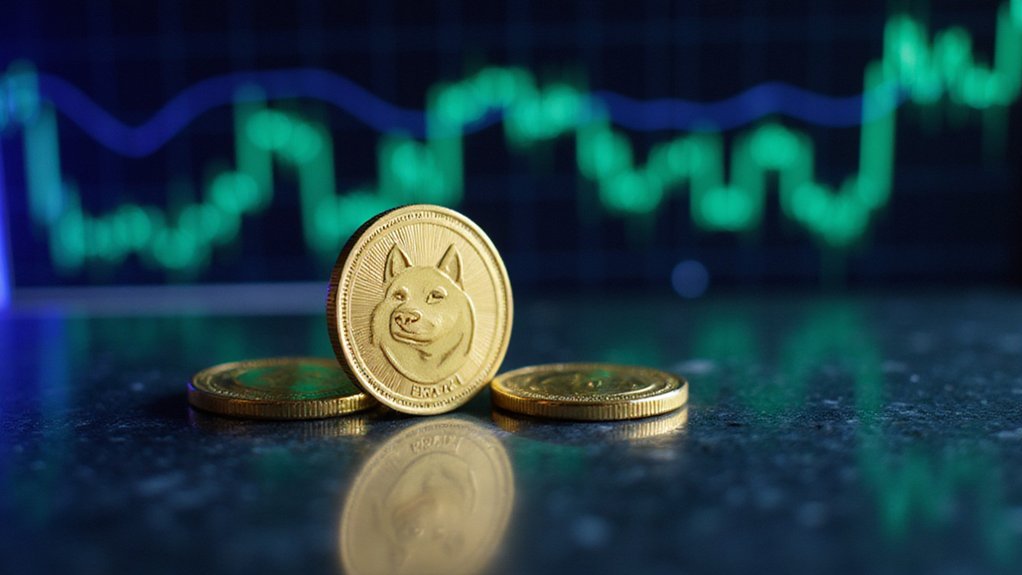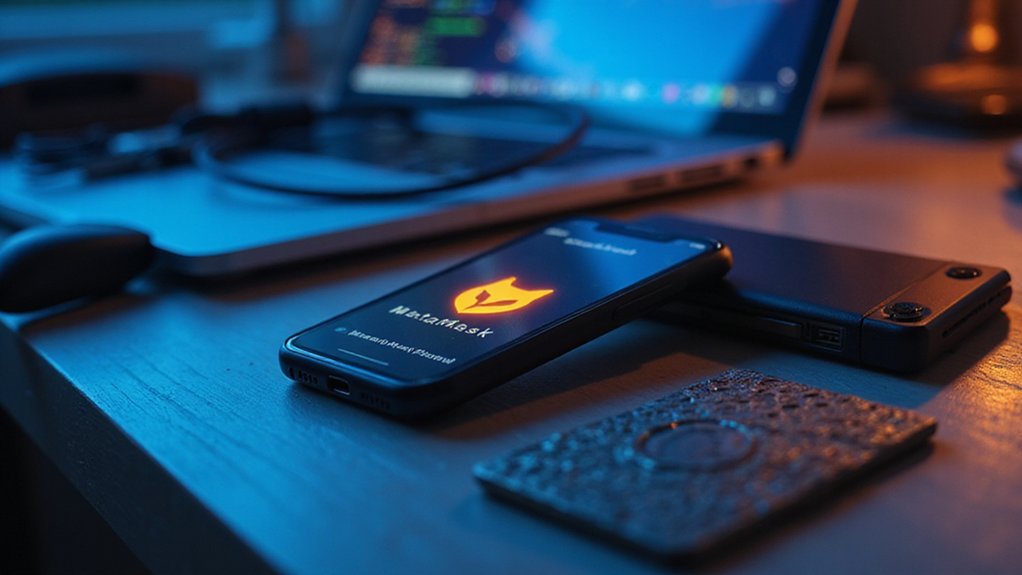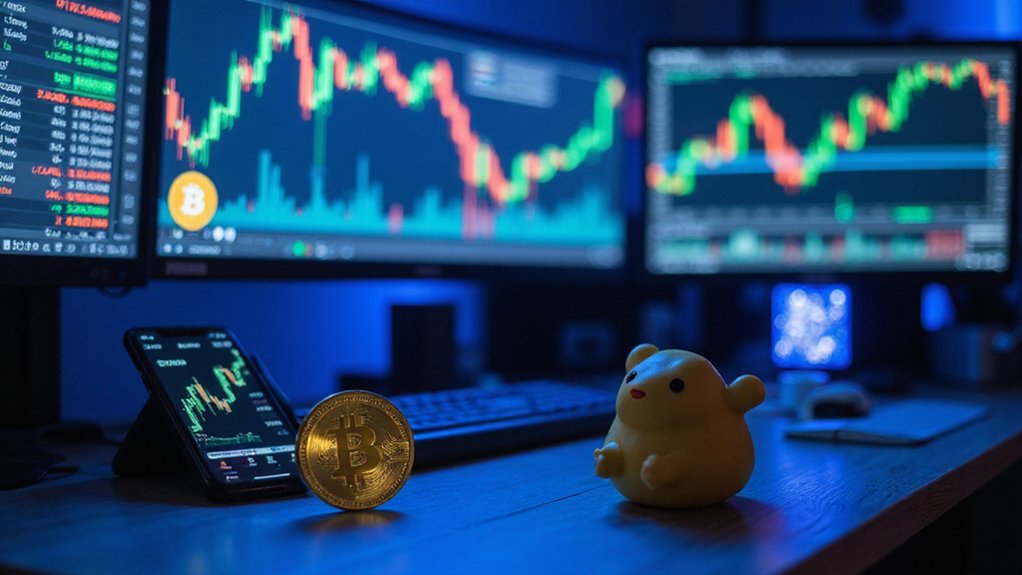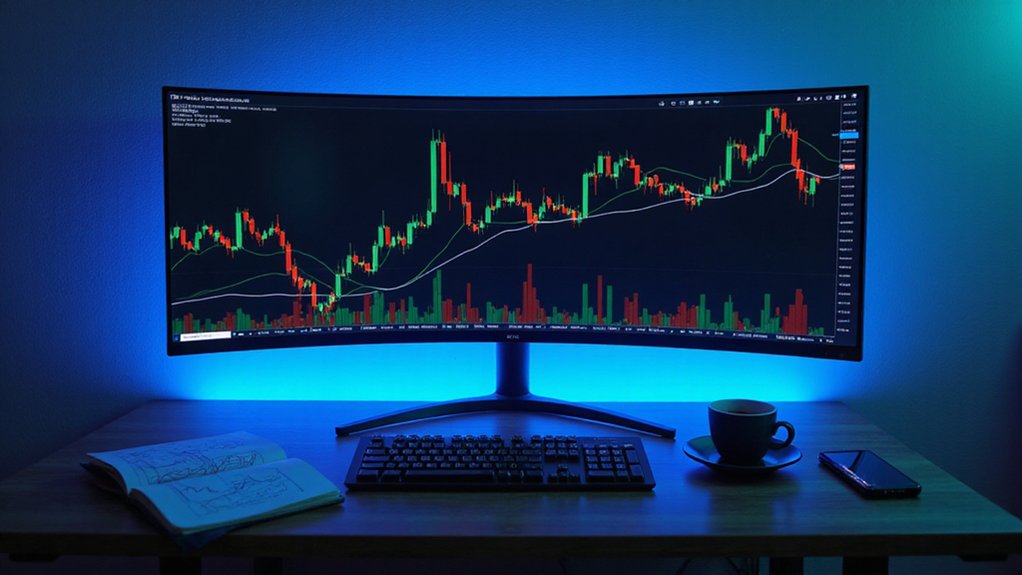Shiba Inu (SHIB) is an Ethereum-based cryptocurrency that emerged in 2020 as a Dogecoin alternative, transforming from meme token to substantial ecosystem. Created by anonymous “Ryoshi,” it features an initial quadrillion token supply and operates through a decentralized community governance model. SHIB anchors an ecosystem including ShibaSwap DEX and Shibarium Layer-2 solution, while maintaining fractional pricing that simultaneously bewilders financial analysts and entices retail investors. The token’s peculiar intersection of absurdist tokenomics and legitimate utility reveals cryptocurrency’s evolving paradigm.

The meteoric rise of Shiba Inu (SHIB) from obscure meme token to cryptocurrency juggernaut represents one of the more bewildering phenomena in an already perplexing digital asset landscape.
Created in August 2020 by the pseudonymous “Ryoshi,” SHIB emerged as an Ethereum-based alternative to Dogecoin, leveraging the robust infrastructure of the Ethereum blockchain while maintaining the whimsical appeal that characterizes canine-themed cryptocurrencies.
With an initial supply of one quadrillion tokens—a number so comically large it borders on financial satire—SHIB established itself as a wholly community-driven experiment in decentralized governance.
Shiba Inu’s absurdist tokenomics transformed financial hyperbole into a legitimate experiment in decentralized community ownership.
The SHIB ecosystem extends beyond its namesake token to include LEASH and BONE, creating a tripartite token structure that supports its various functionalities.
At the center of this ecosystem sits ShibaSwap, a decentralized exchange where participants engage in token swapping, liquidity provision, and yield farming—standard DeFi activities executed through the lens of canine-themed financial instruments.
The development of Shibarium, a Layer-2 solution atop Ethereum, addresses the perennial challenges of transaction costs and processing speeds that plague the underlying network.
Currently trading at approximately $0.00001418 (a price requiring scientific notation on most calculators), SHIB’s microscopic unit value belies its substantial trading volume, which exceeds $333 million in 24-hour periods.
This fractional pricing creates a psychological arbitrage opportunity where investors can acquire millions of tokens for relatively modest sums—a phenomenon that continues to drive retail participation despite the mathematical improbability of reaching $1 per token (which would require a market capitalization exceeding the global economy).
SHIB’s utility extends into numerous DeFi applications, NFT marketplaces, and payment systems—all buttressed by Ethereum’s smart contract functionality.
The token’s integration with emerging blockchain technologies, particularly through Shibarium’s cross-chain capabilities, positions it at the intersection of meme culture and legitimate financial infrastructure, creating an asset that simultaneously serves as both a commentary on and participant in the evolving cryptocurrency ecosystem. Like other popular meme coins such as Pepe Coin and Floki Inu, SHIB blends humor with speculative investment potential while maintaining a dedicated community base. Financial advisors typically recommend limiting investments in high-risk assets like SHIB to no more than 10% of one’s portfolio to mitigate potential losses. The token gained significant attention when Ethereum co-founder Vitalik Buterin donated over 50 trillion SHIB to India’s COVID-Crypto Relief Fund in May 2021.
Frequently Asked Questions
How Does Shiba Inu Compare to Dogecoin?
Shiba Inu and Dogecoin, while both canine-themed cryptocurrencies, exhibit fundamental differences beyond their inception dates (2020 versus 2013, respectively).
SHIB operates on Ethereum’s ecosystem with deflationary tokenomics and PoS consensus, whereas DOGE maintains its own blockchain using PoW.
With a staggering 589 trillion tokens versus Dogecoin’s 148 billion, SHIB offers more speculative volatility, while DOGE—with its higher market capitalization—provides relative stability.
One builds a DeFi ecosystem; the other emphasizes peer-to-peer transactions.
Choose your breed wisely.
What Security Risks Are Associated With SHIB Investments?
SHIB investments face multifaceted security vulnerabilities: phishing attempts via counterfeit websites, fraudulent wallet applications engineered to extract private keys, and social engineering schemes capitalizing on SHIB’s popularity.
The cryptocurrency’s irreversible transaction nature compounds these risks greatly.
Market dynamics introduce additional hazards—extreme price volatility, regulatory uncertainty, and sentiment-driven fluctuations.
Investors should verify information through official channels, utilize reputable wallets, and maintain skepticism toward unsolicited offers (particularly those promising astronomical returns—a classic hallmark of crypto malfeasance).
Can Shiba Inu’s Blockchain Technology Be Used for Non-Financial Applications?
Shiba Inu’s blockchain technology, particularly through Shibarium, offers genuine potential for non-financial applications.
The layer-2 solution’s support for smart contracts and DApps extends beyond mere transactions, enabling decentralized governance systems, NFT-based digital ownership mechanisms, and community-driven collaborative initiatives.
While still evolving, Shibarium’s architecture—with its sharding technology and Proof-of-Stake consensus—creates infrastructure for applications requiring secure, transparent data management across various sectors, though skeptics might reasonably question whether such potential will materialize beyond speculative enthusiasm.
How Does SHIB Staking Work and What Are the Rewards?
SHIB staking (“burying” in ecosystem parlance) lets holders lock tokens on platforms like ShibaSwap, Binance, or Coinbase to earn passive income.
Rewards—typically ranging from modest single-digit to more ambitious double-digit APYs—accrue in SHIB or ecosystem tokens like BONE.
The risk-reward calculus varies considerably; flexible staking offers liquidity but reduced yields, while fixed terms entice with higher returns but introduce opportunity costs that would make any rational economist wince.
What Tax Implications Should SHIB Investors Be Aware Of?
SHIB investors face several tax obligations worth noting. Profits from sales trigger capital gains tax—lower rates apply after holding for more than a year.
Mining or staking rewards count as ordinary income, regardless of whether they’re converted to fiat.
Charitable donations of SHIB may provide deductions while avoiding capital gains entirely.
Tax-loss harvesting (selling at strategic losses) might offset gains elsewhere.
Given crypto’s regulatory scrutiny, meticulous transaction records and professional tax guidance are particularly prudent investments themselves.









